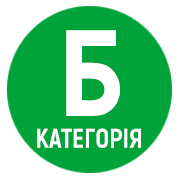DEVELOPMENT AND IMPLEMENTATION OF THE STRATEGY FOR THE INCLUSIVE DEVELOPMENT OF A MUSEUM-TYPE INSTITUTION (CASE OF THE NATIONAL RESERVE “ZAMKY TERNOPILLA”)
DOI:
https://doi.org/10.32782/2787-5137-2025-1-7Keywords:
inclusion, inclusive approach, museum-type institution, reserve, strategy, strategizing, accessibility auditAbstract
Introduction. The article deals with the relevance of the problem of implementing an inclusive approach invarious spheres of life, including the social, educational, cultural, public sector, etc. The peculiarities of integrating the principles of inclusion into museum-type institutions (cultural sphere) have been analyzed. The specifics of integrating inclusion into the museum space have been outlined, which involves not only physical and information accessibility of institutions but also the preservation of culture, identity, and the co-creation of a cultural space where principles such as respect, equality, justice, tolerance, etc. have been indicated.The purpose of work is to substantiate the Strategy for the inclusive development of museum-type institutions, using the example of the National Reserve “Zamky Ternopillia” (the National Reserve). The Strategy aims to overcome barriers and obstacles to access to the National Reserve’s tourist attractions and cultural services.Scientific novelty of the study lies in the presentation of the case of the National Reserve “Zamky Ternopillia” on the strategy of inclusive development of a museum-type institution. The essence of the concept of “human-centered design” and the stages of its development, as well as the principles of human-centered and universal design have been revealed in the article. The content of the main stages of strategizing the inclusive development of the National Reserve (preliminary, preparatory, analytical, planning, implementation, and monitoring) has been identified and analyzed. Attention is focused on the analysis of the results of the accessibility audit of the National Reserve, which concerned all environmental components: physical and information accessibility; organizational culture, and the level of inclusive competence of the institution’s employees. A three-level inclusivity scale for an objective interpretation of the results of the National Reserve accessibility audit has been developed. A set of methods was used, including author’s questionnaires.Conclusions. Thus, based on the audit findings, the work team developed the Strategy project. Its discussion at the Scientific Council of the National Reserve meeting has been organized. The Strategy’s implementation period has been determined (2024–2029).
References
Філіпчук Н., Удич З. Соціальний аспект музейно-освітньої взаємодії. Естетика і етика педагогічної дії: збірник наукових праць. 2021. Вип. 23. С. 27–42. URL: http://dspace.pnpu.edu.ua/bitstream/123456789/17277/1/Filipchuk.pdf (дата звернення: 17.11.2024).
International Council of Museums: General Assembly. URL: https://icom.museum/en/about-us/general- assembly (date of access: 18.11.2024).
Norman D.A. Design of Everyday Things. New York, 2013. 325 p. URL: https://ia902800.us.archive. org/3/items/thedesignofeverydaythingsbydonnorman/The%20Design%20of%20Everyday%20Things%20 by%20Don%20Norman.pdf (date of access: 17.11.2024).
Zhang T., Dong H. Human-Centred Design: an Emergent Conceptual Model. London, 2008. URL: https://bura.brunel.ac.uk/bitstream/2438/3472/1/Fulltext.pdf?utm_source=chatgpt.com (date of access: 17.11.2024).
Center for Universal Design. North Carolina State University: website. URL: https://design.ncsu.edu/research/center-for-universal-design (date of access: 18.11.2024).
Думська Т. Стратегування інклюзивного розвитку Національного заповідника «Замки Тернопілля». Інклюзивна освіта: ідея, стратегія, результат: збірник матеріалів ІІІ Всеукраїнської між- дисциплінарної науково-практичної конференції з міжнародною участю, м. Тернопіль, 23–24 квітня 2023 р. Тернопіль, 2023. С. 104–111.
Думська Т. Аудит інклюзивної доступності музейного середовища як передумова розширення музейної аудиторії. Охорона культурної спадщини як невід’ємний елемент розвитку туризму на Тернопільщині: матеріали науково-практичної конференції, м. Збараж, 31 травня 2023 р. Збараж, 2023. С. 48–54.
Чернобай Ю., Бриндза В. Проект стратегії збалансованого розвитку музею. Наукові записки Державного природознавчого музею. 2014. № 30. С. 3–22.
Васіна Ю. Стратегування як механізм структурного реформування національної економіки. Економічний вісник Запорізької державної інженерної академії. 2017. № 2–1 (8). С. 34–39.
Мармаза О. Стратегічний менеджмент: підручник. Харків: ТОВ «Планета-принт», 2015. 103 с.
Орищук В. Стратегування як механізм удосконалення державної політики цифрового розвитку у сфері музейної справи. Вісник Київського національного університету імені Тараса Шевченка. 2022. № 2. С. 28–35.
Udych Z., Shulha I., Chepurna L. & Rudenko L. Inclusive Education in Ukraine: Challenges, Conditions and Implementation Strategies. Conhecimento & Diversidade. Niterói, 2024. V. 16, n. 41. P. 419–445. URL: https://revistas.unilasalle.edu.br/index.php/conhecimento_diversidade/article/view/11506 (date of access: 17.11.2024).
Udych Z., Shulha I. A Higher Education Institution as a Leader in Strategizing Inclusive Development of the Territorial Community. Modern Education in Ukraine: Challenges, Expirience, Prospects: monograph / ed. V. Ivanyshyn. Kamianets-Podilskyi: Higher Educational Institutions “Podillia State University” ; Riga: Ваltija Publishing, 2024. P. 105–114.
Аудит: методика і організація / Н. Гордієнко та ін. Харків : ХНУМГ ім. О. Бекетова, 2017. 319 с.
Доступність та універсальний дизайн: навчально-методичний посібник / В. Азін та ін. Київ, 2013. 128 с.
Положення про Національний заповідник «Замки Тернопілля» (нова редакція від 26 травня 2020 р.). 2020. 19 с.







